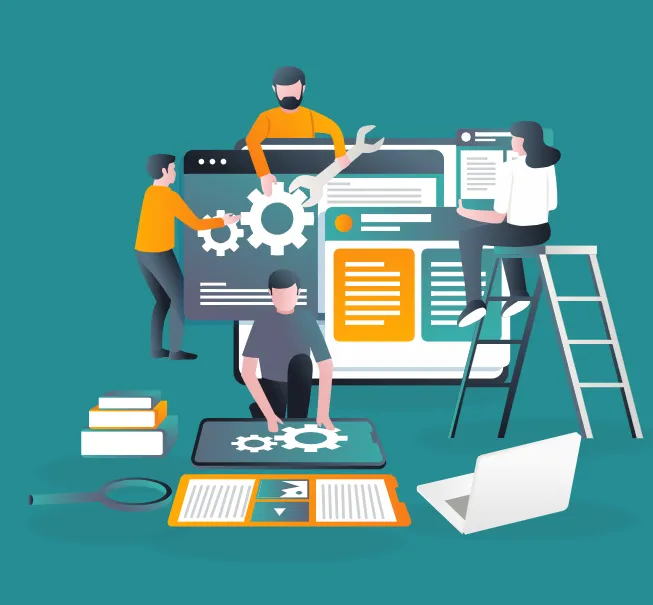In today’s fast-paced world, we’re surrounded by innovative products that constantly evolve and impact our daily lives. But have you ever wondered what goes into creating these products? The answer lies in the fascinating realm of product engineering, where engineers play an integral role in bringing ideas to life. This article aims to explore the world of product engineering, its significance, and its wide-reaching impact.
What is Product Engineering?
Product engineering is the process of turning an idea into a tangible product. It encompasses everything from initial design to development, testing, and final manufacturing. Product engineers are the masterminds who ensure that products not only meet their intended purposes but also stand out in terms of quality, functionality, and market competitiveness.
The Significance of Product Engineering in Various Industries
Product engineering is critical across a wide array of industries. The work of engineers is essential in creating products that enhance our everyday experiences and drive technological advancement.
- Consumer Electronics: Engineers in this field design electronics that are functional, easy to use, and visually appealing, such as smartphones, tablets, and wearables.
- Automotive Industry: Engineers focus on creating reliable, safe, and efficient vehicles, from advanced engines to high-tech safety systems.
- Medical Devices: In healthcare, product engineers develop life-saving instruments and equipment, ensuring both precision and patient safety.
- Aerospace: In aerospace, product engineers push the boundaries of innovation, designing rockets, satellites, and other advanced systems essential for space exploration.
Key Aspects of Product Engineering
Product engineering is a dynamic process that involves multiple stages, each focusing on different aspects of development:
- Design: This phase involves brainstorming and creating blueprints for the product, considering user needs, functionality, and aesthetics.
- Development: During this stage, the design is turned into a working model, involving coding, prototype creation, and selecting materials.
- Testing: Before hitting the market, products are rigorously tested to ensure they meet safety, performance, and quality standards.
- Manufacturing: The final step involves large-scale production, ensuring that the product is made efficiently and cost-effectively.
Goals of Product Engineering
Product engineers aim to achieve several key goals to ensure a product’s success:
- Functionality: Products must perform their intended tasks consistently and efficiently.
- Usability: A user-friendly design encourages customer adoption and satisfaction.
- Quality: Products should be made from durable materials to ensure long-lasting performance.
- Cost-Effectiveness: Striking a balance between innovation and cost is crucial for both companies and customers.
- Innovation: Ongoing exploration of new technologies ensures that products remain competitive and relevant.
The Product Engineering Journey
The process of developing a product from concept to market is intricate and involves several key stages:
- Conceptualization: This phase includes brainstorming, market research, and identifying opportunities for new products.
- Requirement Analysis: Engineers define the technical requirements and functionalities the product must have to meet user needs.
- Design and Prototyping: Engineers create visual models and prototypes to test the product’s feasibility.
- Development and Implementation: This phase involves turning designs into working products through coding, integration, and assembly.
- Testing and Quality Assurance: Rigorous testing ensures that the product works as expected and meets quality standards.
- Manufacturing and Deployment: Scaling up production to meet demand and distributing the product efficiently.
- Maintenance and Iteration: Engineers continuously collect user feedback and make necessary improvements to enhance the product’s performance over time.
The Role of Product Engineers
Product engineers play a crucial role throughout the product lifecycle. They bring a diverse set of skills to the table:
- Technical Expertise: They possess a strong understanding of engineering principles, whether in mechanical, electrical, or software engineering, depending on the product.
- Problem-Solving: Engineers are adept at tackling challenges that arise during development.
- Project Management: Managing timelines, budgets, and resources is essential for successful product development.
- Communication: Product engineers translate technical details for various stakeholders, including designers, marketers, and manufacturers.
- Collaboration: They work closely with cross-functional teams to ensure the product is executed smoothly.
Technologies Powering Product Engineering
Advances in technology have revolutionized product engineering. Here are some key tools that are transforming the field:
- CAD (Computer-Aided Design): CAD software allows engineers to design products in detail, enabling simulations and virtual testing.
- Simulation Software: Engineers can use simulation tools to test designs in a virtual environment, which helps optimize performance before physical prototypes are made.
- Prototyping Tools: Technologies like 3D printing and CNC machining make prototyping faster, allowing for quicker iterations.
- IoT (Internet of Things): The integration of IoT enables products to have connectivity and smart capabilities, unlocking new functionalities.
- AI and Machine Learning: These technologies help enhance products with intelligent features such as predictive maintenance and personalized user experiences.
Challenges in Product Engineering
Despite its importance, product engineering faces several challenges:
- Time-to-Market Pressure: Fast-paced markets require shorter development cycles, making efficient processes and agile methodologies essential.
- Cost Constraints: Balancing quality with cost-effectiveness is a challenge in product development.
- Quality Control: Ensuring the product meets all standards under tight deadlines is a constant challenge.
- Regulatory Compliance: Adhering to industry standards and certifications adds complexity to the development process.
- Sustainability: With increased emphasis on environmental impact, engineers must integrate sustainable practices and materials into their designs.
Looking Ahead: Trends and Innovations in Product Engineering
As technology and consumer needs continue to evolve, product engineering will adapt. Here are some trends expected to shape the future of the field:
- AR and VR Integration: Augmented and virtual reality will enhance product design and improve user experiences.
- Blockchain: This technology will improve supply chain transparency and product authentication.
- Sustainability: Environmental concerns will continue to drive the adoption of recyclable materials, energy-efficient products, and practices aimed at reducing carbon footprints.
Final Thoughts
Product engineering is more than just creating products; it’s about transforming ideas into solutions that improve lives and drive progress. With a focus on innovation, collaboration, and a customer-centric approach, product engineers are at the forefront of shaping the future of industries worldwide. Through their expertise and dedication, they ensure that tomorrow’s products will continue to meet the needs of an ever-evolving world.







